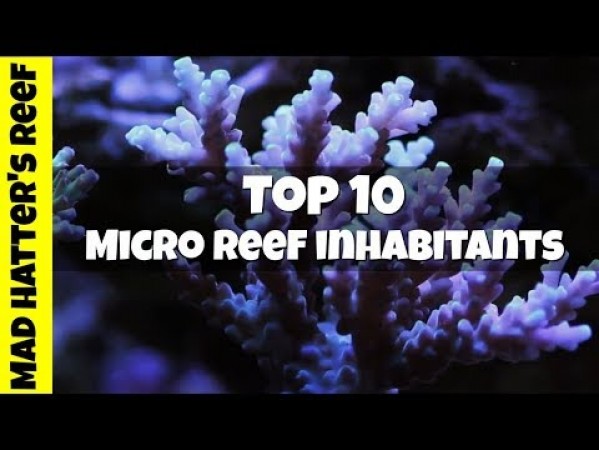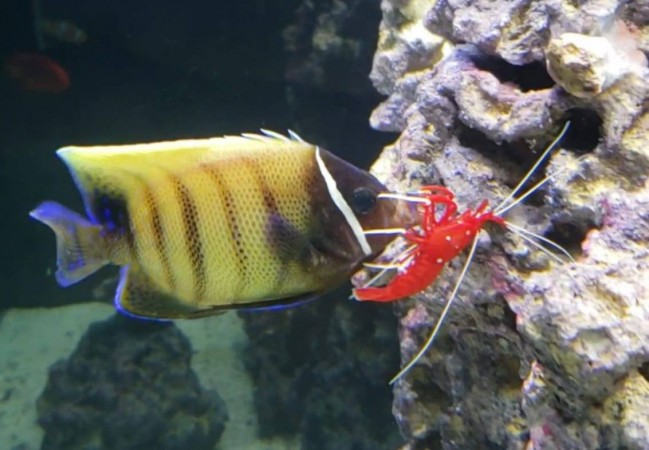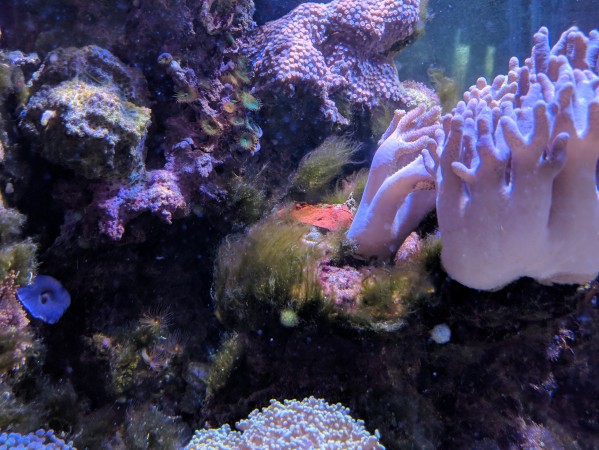- Name:
Emerald Crab
(View AKA's) - Family: Majidae
- Species: Crab
- Scientific Name: Mithraculus sculptus
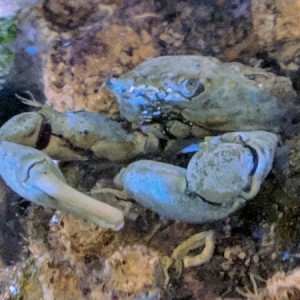

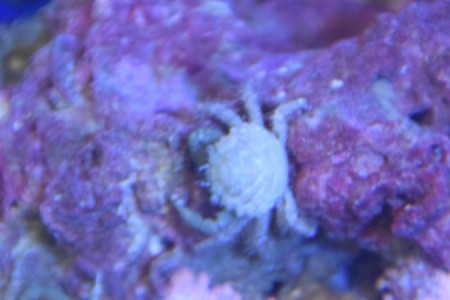
General info about Emerald Crab
The Emerald Crab is known for its scavenging ability. It will enthusiastically feed on uneaten meaty foods and many types of nuisance algae. Its distinct, flat shiny green body and hairy legs easily identify the Emerald Crab. It grows up to about 4 cm (1.6 in). Native to the reefs of the Caribbean, the Emerald Crab is nocturnal and hides in caves and amongst rubble during the day.
In the home aquarium, this member of the Majidae family requires a well-established aquarium with plenty of rockwork and hiding places. Once familiar with its surroundings, the Emerald Crab will venture out of hiding during the day to forage on algae. Emerald crab is highly compatible with other reef species.
Emerald crabs will molt/shed their exoskeleton as they grow and leave behind what could appear to be a dead crab. If you are lucky enough to witness the crab molting, you will see a significant difference in the size of the crab. Once done their outer skeleton is very soft (soft shelled crab) making them extremely vulnerable to attacks. Therefore they will hide for several days or even often week while their shell hardens again. When encountering a fresh molt, most hobbyists think the Emerald crab has died until they find them still in the tank at a later time. It is best to remove the molt or suspected dead crab from the tank it to prevent any nutrient build up.
Emerald Crab Diet & Nutrition
Emerald crabs are scavengers and omnivorous that subsists on uneaten meat and algae but should also be feed mysids, dried nori, and pellet foods to prevent them from picking at other species in the tank including corals, invertebrates and small fish. Emerald crab tend to grows best when fed with mysids and not with pellet food. They can be used to control many types of nuisance algae including bubble algae.
While not all emerald crabs will eat bubble algae, if you plan to introduce them after bubble algae outbreak you may be disappointed, they usually will eat bubble algae while it is much smaller and better suited to prevent future outbreaks.
Determining Sex of Emerald Crab
Determining the sex of the emerald crab cannot be based on color but the ventral of its body. Males have a pillar-like apron while females lack this feature. Usually, males are larger and more aggressive than females.
Common Diseases with Emerald Crab
Emerald crabs are quite hardy crabs if you notice a difference in coloration it could be that it is about to molt. Soon you could find what looks like a dead Emerald crab in most cases it is hiding and within a few days or even weeks could resurface once its exoskeleton has harden.
Emerald Crab Origin
Emerald crab originates from the Carribean Sea and the Gulf of Mexico. It is also widely distributed in areas like the Bahamas, southern Florida, and north of Brazil.
Caution with Emerald Crab
If no food sources are available or scarce, the Emerald carb is an opportunistic feeder that could turn to corals, invertebrates, or small fish for a food source.
Emerald crabs are sensitive to big swings in parameters (like salinity/temperature) as well as traces of metal in the water. Copper treatments should not be used if Emerald crabs, as well as most invertebrates, are present in the aquarium.
Acclimating Emerald Crab
Due to their sensitivity towards large swings in water parameters. You should float your Emerald crabs to get your water temperatures to match, and you should be drip acclimated if the source water and your tank salinity are different. If there is a significant difference in salinity, then you should drip acclimate very slowly to allow the Emerald crab to adjust to its new water conditions.
When taking the invertebrate out, expose it to as little light as possible and turn the aquarium lights off. Place the invertebrate container bag in the aquarium and let it float for 15 minutes. Open the bag and pour in 1 ounce of aquarium water into it, do so every 5 minutes until the water inside the bag has doubled. Wait for 5 minutes before pouring off half the water inside the bag into the aquarium. Then, slowly place each animal in the aquarium. Turn the aquarium lights on after an hour or more.
Original Detail
| Name | Species | Family | Scientific Name | More Detail | Added by |
|---|---|---|---|---|---|
| Emerald Crab | Crab | Majidae | Mithraculus sculptus | The Emerald Crab is known for its scavenging ability. It will enthusiastically feed on uneaten meaty foods and many types of nuisance algae. Its distinct, flat shiny green body and hairy legs easily identify the Emerald Crab. It grows up to about 4 cm (1.6 in). Native to the reefs of the Caribbean, the Emerald Crab is nocturnal and hides in caves and amongst rubble during the day. In the home aquarium, this member of the Majidae family requires a well-established aquarium with plenty of rockwork and hiding places. Once familiar with its surroundings, the Emerald Crab will venture out of hiding during the day to forage on algae. Emerald crab is highly compatible with other reef species. Emerald crabs will molt/shed their exoskeleton as they grow and leave behind what could appear to be a dead crab. If you are lucky enough to witness the crab molting, you will see a significant difference in the size of the crab. Once done their outer skeleton is very soft (soft shelled crab) making them extremely vulnerable to attacks. Therefore they will hide for several days or even often week while their shell hardens again. When encountering a fresh molt, most hobbyists think the Emerald crab has died until they find them still in the tank at a later time. It is best to remove the molt or suspected dead crab from the tank it to prevent any nutrient build up. |
PalaciosAn |
Changed by users
| Submitted Date | Submitted By | Status | Action |
|---|


